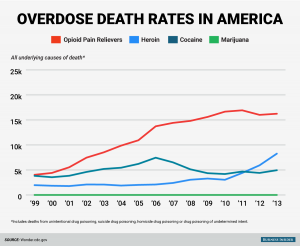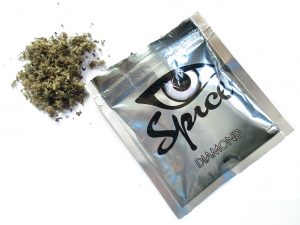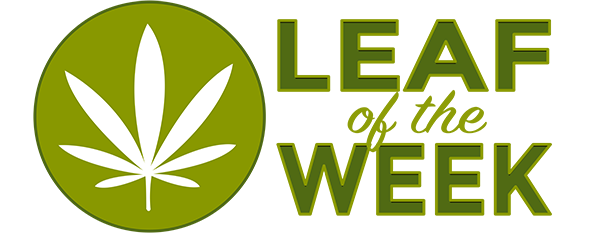Up in Smoke: 5 Marijuana Myths It’s Time We Burn
Featured Photo Credit: Toke Signals
Even though it’s been proven—ahem, numerous times—that cannabis is champion for our health, there are still a few opinions holding strong about how it is bad for our bodies. Let’s explore five marijuana myths that remain in circulation today but have already been debunked by science.
1. Marijuana smoke is as damaging as cigarette smoke.
Everybody knows how damaging cigarette smoke is: cancer, COPD, heart disease, stroke, potential stillbirths—the list goes on for miles. Marijuana smoke is often lumped in with cigarette smoke because it seems like the sensible thing to do, and, while these two types of smoke share some chemical similarities, marijuana smoke actually has proven to be far less damaging. Some studies have even shown that it possesses the ability to heal the lung from damage as well as halt the production of cancer cells thanks to its trusty cannabinoids.
Check out this cross-sectional study, only one of many, at the National Center for Biotechnology Information that concluded that a cumulative use of marijuana over 20 joint-years did not negatively impact the lung health of its participants.
More good news: For those who don’t want to run any risks with smoke inhalation whatsoever, or those with respiratory illnesses and sensitivities, there are ways to harness the healing powers of cannabis by vaping, enjoying edibles, or administering oils, tinctures, and topicals.
Check out this post from our resident budtender, Chris Fisher, for more information about alternative ways to consume your cannabis.
2. You can die from a marijuana overdose.
The National Cancer Institute calls shenanigans on this myth. Cannabinoid receptors aren’t located in the brainstem where essential functions like respiration are controlled, so the NCI says that marijuana, no matter how high the dose, can’t stop a person from breathing. This means that a lethal dose of marijuana doesn’t even exist. That’s not to say a person can’t get too high—with possible side effects of paranoia, dry mouth, increased heart rate, loss of energy, and the like—but these unpleasant feelings are temporary and should ease up in a matter of hours.
Unfortunately, the same can’t be said for the overuse of other substances, like certain prescription medications, heroin, and cocaine.

Photo Credit: Business Insider
3. There’s no need to risk using an illegal substance when there’s a legal synthetic version that will do the trick.
No. Just no.
This is an extremely harmful myth that entices people who want to enjoy the effects of a weed high (or what they’ve heard will be the effects of a weed high), but don’t want to deal with the legal ramifications of being caught with actual marijuana (in a state where it’s illegal) or having it show up on a urine test.

Photo Credit: Wikipedia
Not to be confused with Marinol or any other legal synthetic used for medicinal purposes, synthetic cannabinoids (like the little goblins known as Spice and K2) are recreational cannabis copycats that aren’t regulated by the FDA and have proven to be dangerous. Given that they can be much more potent than actual THC, reported side effects of their use have included psychosis, headaches, chest pain, vomiting, vision loss, high blood pressure, terrible withdrawal symptoms, and even death.
When it comes to marijuana, ain’t nothing like the real thing, baby. Synthetic cannabinoids aren’t safe, so it’s best to leave them in the dust.
Learn more about synthetic cannabinoids here.
4. One puff of marijuana makes you hopelessly addicted.

Photo Credit: That 70’s Show – Rebloggy
An early study shows that the number of people who become addicted to marijuana use is 9%, situating it as a substance with one of the lowest probabilities for dependence. Alcohol comes in at 15%, cocaine at 17%, heroin at 23%, and tobacco at 32% according to Scientific American. It’s suggested that only heavy users are susceptible (but not guaranteed) to experience dependence on marijuana, and marijuana’s addictive properties are largely psychological and not chemical based.
5. Only lazy hippies use marijuana.
Okay, so this myth doesn’t relate to health exactly, but it’s an attitude I still encounter and should be addressed. Here are just a few high-profile people who have dispelled this stereotype through their own cannabis use and/or advocation:
- Maya Angelou, American writer and civil rights activist
- Carl Sagan, American cosmologist, astronomer, astrobiologist, and astrophysicist
- Bill Gates, American business magnate and cofounder of Microsoft
- Morgan Freeman, American actor and producer
- Bill Maher, American writer, comedian, and political commentator
Plenty of other high-functioning members of society enjoy the benefits of cannabis, whether medicinally or recreationally, all while succeeding in their careers, raising happy families, and maintaining healthy lifestyles.
As Bob Dylan (another notable cannabis user) sang, “The times they are a-changin’.” It’s high time that the acceptance of these marijuana myths as facts a-changes, too.
Cannabis products are designed for adults 21 and older. Please consume responsibly.
Check back every Wednesday at 4:20 for more Cannabis Health with Kelsi




